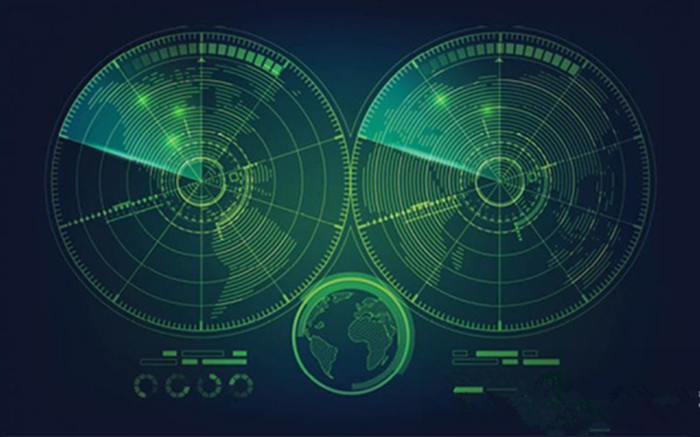From 1D to 4D Radar: Technological Evolution and Intelligent Transportation Applications

In the era of rapid development of intelligent transportation, precise environmental perception technology is a core element. Radar technology, with its unique advantages, has gradually evolved from simple 1D radar to powerful 4D radar, and its applications in the field of intelligent transportation have become increasingly extensive and in – depth, effectively promoting the development of intelligent transportation systems towards high – efficiency and safety.
1D Radar: The Beginning of Intelligent Transportation Sensing
As the prototype of radar technology, 1D radar’s main function is to measure the speed of targets. It emits and receives radio waves of specific frequencies and calculates the radial velocity of target objects relative to the radar using the Doppler effect. In the early intelligent transportation systems, 1D radar was mainly applied to fixed – point speed measurement on highways. By setting up speed – measuring devices on specific sections of the road, it could quickly obtain the speed information of passing vehicles, monitor and alert speeding vehicles, and maintain the speed order of road traffic to a certain extent.
2D Radar: Expanding the Dimensions of Traffic Sensing
2D radar represents a significant breakthrough based on 1D radar, capable of simultaneously obtaining the distance and speed information of targets. It adopts more complex signal processing and antenna technologies. By emitting directional beams and receiving reflected signals, it can determine the distance between the target and the radar and the relative speed. In the field of intelligent transportation, the application scope of 2D radar has been expanded. For example, in parking lot management systems, 2D radar can be used to detect the entry and exit of vehicles and the occupancy of parking spaces. By detecting the change in the distance between the vehicle and the radar and the vehicle’s driving speed, the system can accurately determine whether a vehicle is entering or leaving the parking lot and precisely identify whether each parking space is occupied, thus realizing the automated management of the parking lot and improving the utilization efficiency of parking resources. In traffic flow monitoring, 2D radar monitors the distance and speed of vehicles in different directions and statistics the traffic flow information of specific road sections, providing basic data for traffic management departments for traffic flow analysis and regulation.
3D Radar: A Leap in Spatial Positioning Sensing
3D radar further adds the function of angle measurement, achieving the positioning of targets in three – dimensional space. This technological advancement has greatly enhanced the perception ability of the traffic environment. 3D radar consists of multiple antenna units forming an array. By using technologies such as beamforming, it can accurately measure the horizontal and vertical angles of targets. Combining with distance and speed information, it can precisely determine the position coordinates of target objects in space. In air traffic control in the aerospace field, 3D radar can accurately monitor the position, speed, and flight direction of aircraft, ensuring the safe takeoff, landing, and in – air flight order of aircraft. In the urban road scenarios of intelligent transportation, 3D radar can be used for intersection traffic monitoring. It can not only obtain the speed and distance of vehicles but also accurately identify the driving direction and position of vehicles in different lanes at the intersection, providing more accurate data support for the intelligent timing of traffic lights. In advanced driver – assistance systems (ADAS), 3D radar can perform three – dimensional spatial positioning of obstacles, other vehicles, and other targets within a certain range around the vehicle, assisting the vehicle in functions such as adaptive cruise control and automatic emergency braking, and improving the driving safety of the vehicle.
4D Radar: A New Revolution in Intelligent Transportation Sensing
4D radar, based on 3D radar, adds precise height measurement of targets and real – time tracking and prediction of target trajectories, becoming a key technology in the field of intelligent transportation. Using advanced algorithms and high – performance hardware, it generates high – precision point cloud data and can accurately obtain the distance, speed, horizontal and vertical angles, and height information of targets, achieving four – dimensional space perception. In autonomous driving, 4D radar can perceive the position, speed, direction, and height of vehicles, pedestrians, obstacles, etc. in real – time, providing reliable data for the decision – making system. For example, in complex urban streets, it can identify the height of the vehicle in front, determine the vehicle type, and track its trajectory, assisting autonomous vehicles in making decisions such as acceleration, deceleration, and avoidance, and enhancing safety and reliability. In intelligent traffic management, 4D radar can collect the four – dimensional information of vehicles, statistics the traffic flow of different vehicle types and directions, analyze the causes and trends of traffic congestion, and assist traffic departments in formulating traffic – relief plans. Moreover, in harsh weather conditions such as heavy rain and fog, 4D radar is less affected and can continuously provide stable environmental perception for intelligent transportation systems, ensuring traffic operation.

The technological evolution process from 1D to 4D radar shows a continuous breakthrough and improvement development context. Each generation of radar technology is based on the previous generation, successively expanding the perception dimensions, enriching the functional characteristics, and gradually meeting the strict requirements of intelligent transportation systems for high – precision and comprehensive environmental perception. 1D radar builds the basic framework, 2D radar expands the perception in the distance and speed dimensions, 3D radar achieves precise spatial positioning, and 4D radar, with its new capabilities such as highly accurate height measurement and motion trajectory prediction, injects strong impetus into the development of intelligent transportation.
